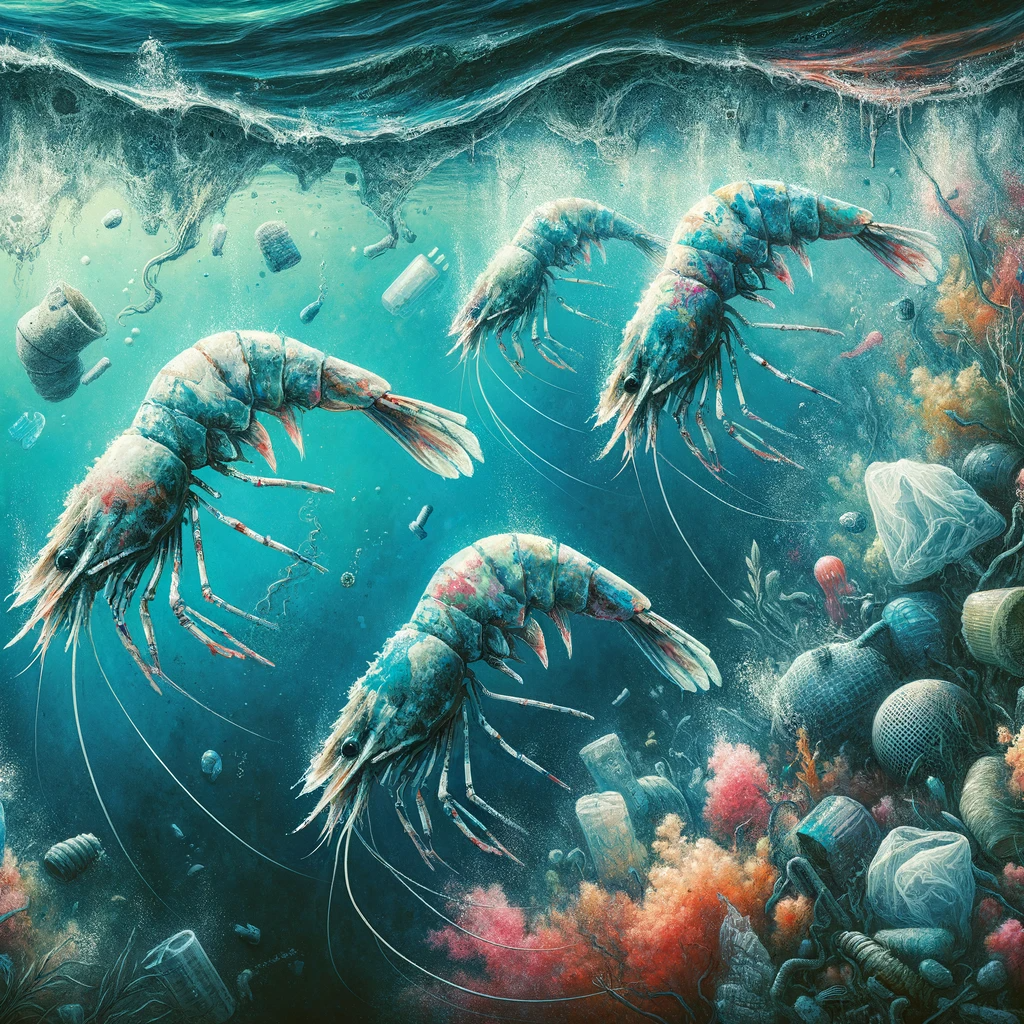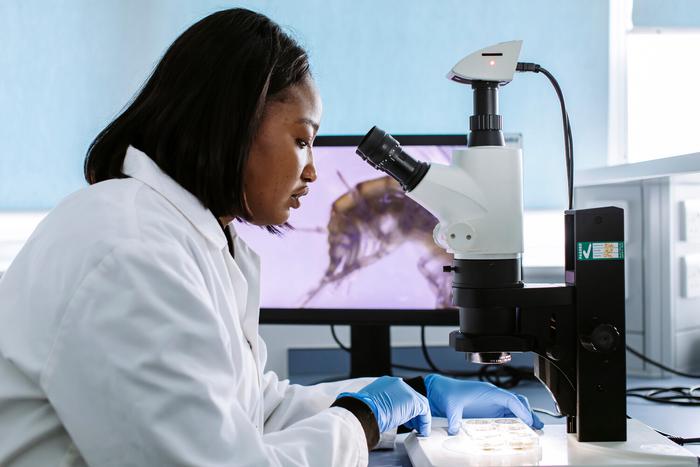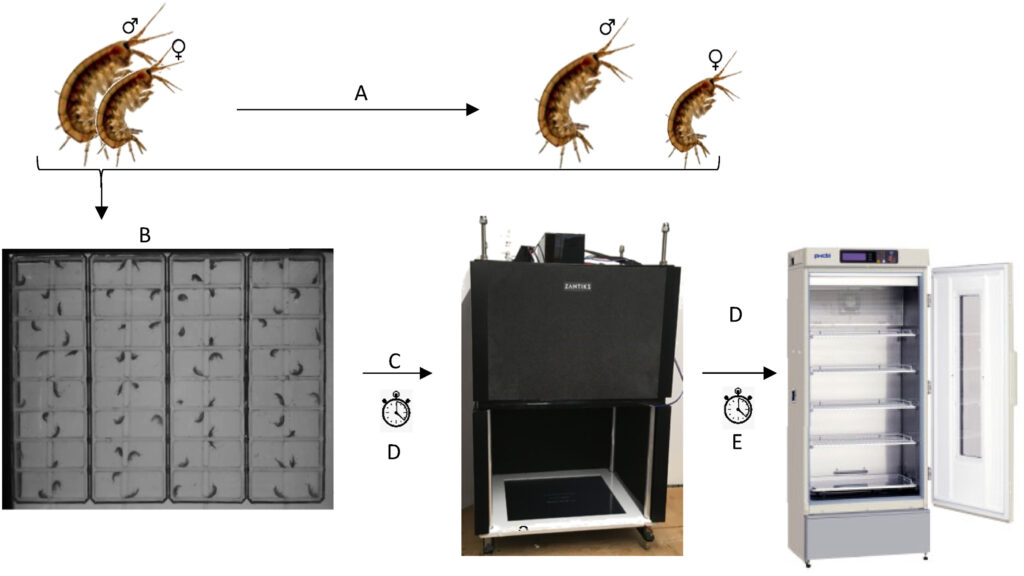From University of Portsmouth 08/12/23

Plastic waste in the water might be stopping – or interrupting – some shrimp-like creatures from reproducing.
In a unique study, the ability of ‘shrimp like’ creatures to reproduce successfully was found to be compromised by chemicals found in everyday plastics.
Research showed that little critters, known as marine amphipod Echinogammarus marinus, changed their mating behaviour when exposed to toxic plastic additives.
Until now, most research into plastic pollution has focused on visual plastics; what can get trapped in plastics and the dangers of ingesting large particles.
Scientists from the University of Portsmouth have taken a different approach and investigated the chemicals that are used as ingredients in plastics.
Professor Alex Ford, from the Institute of Marine Sciences at the University of Portsmouth, says: “This unsuccessful mating behaviour has serious repercussions, not only for the species being tested but potentially for the population as a whole.”
“These animals form pairs to reproduce. Once they were exposed to a chemical, they would break apart from their mate and take much longer -in some cases days – to repair, and sometimes not at all.
“These creatures are commonly found on European shores, where they make up a substantial amount of the diet of fish and birds.”
“If they are compromised it will have an effect on the whole food chain.”
There are over 350,000 chemicals in use around the world in everyday products.
Ten thousand of these are used to enhance plastics.

Chemicals can be used to make plastics more flexible, add colour, give sun protection or make plastic flameproof.
Around one third of these chemicals are known to be toxic to human’s immune, nervous or reproductive systems.
The study, published in the journal Environmental Pollution, tested four widely used chemicals found in plastics.
These plastic additives are used in a variety of common products, for example, phthalates (DEHP and DBP) which are found in medical supplies, food packaging and toys.
Triphenyl phosphate (TPHP) is mainly used as a flame retardant in products like nail polish and electronic equipment, including cables, and N-butyl benzenesulfonamide (NBBS) is used in nylon, medical devices, cooking utensils and films.
Bidemi Green-Ojo, lead author and PhD Researcher in Environmental Toxicology at the University of Portsmouth, says: “We chose these four additives because the suspected danger they pose to human health is well documented.”
“Two of the chemicals we investigated (DHP and DEHP) are regulated and not allowed to be used in products in Europe.”
“The other two chemicals have no current restrictions on them and are found in many household products.”
“We wanted to test the effects these chemicals had on aquatic mating behaviour.”
The ‘shrimp like’ creatures which have been studied are known to pair up and typically lock together for two days while mating.

Pairs of them were exposed to each chemical, and researchers monitored their behaviour over four days, measuring the time it took for the creatures to mate.
They found that at best it took much longer for the creatures to re-pair, and at worst they didn’t re-pair.
A video of the experiment shows the problem.
The experiment found that all the plastic additives had the capacity to reduce the overall percentage of animals that formed pairs.
The ones which did form pairs took longer to make contact and re-pair.
Two of the chemicals caused a concentration-dependent effect on shrimps’ sperm, resulting in a decline of up to 60 per cent in sperm count of those exposed to elevated levels of the chemicals.
“Although the animals we tested were exposed to much higher concentrations than you would normally find in the environment, the results indicate these chemicals can affect sperm count”, explains Professor Ford.
“It is conceivable that if we did the experiment on shrimps that had been exposed for a longer period or during critical stages in their life history, it would affect their sperm levels and quality.”
Bidemi Green-Ojo adds: “We must understand more about these chemicals and how they affect behaviour.”
“Many types of behaviour – such as feeding, fight or flight mode, and reproduction – are essential in an animal’s life, and any abnormal behaviour may reduce the chances of survival.”
“We are urging environment agencies around the world to take more notice of behavioural data, because sometimes the data tells us things that normal toxicity tests don’t.”
“Studies like this give a different perspective on potential damage caused by a specific pollutant.”




The study on the impact of plastic chemicals on marine life’s reproductive behavior is eye-opening. The findings highlight the crucial need to consider not just the visible effects of plastic pollution but also the chemical additives’ detrimental impact on aquatic organisms. This comprehensive analysis by the University of Portsmouth sheds light on the overlooked consequences of plastic ingredients on marine species’ mating behavior, urging global environmental agencies to reevaluate the dangers posed by plastic pollutants. For more insights, visit ZetarVac